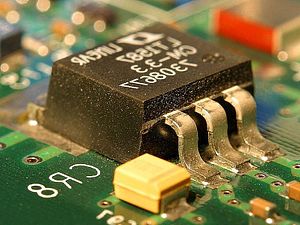Over the past 12 months or so, there has been growing angst around the world, especially in the United States, about China’s designs in the semiconductor sector. These ambitions are not new and constitute an integral part of China’s efforts since the 1950s to gain national technological independence, enhance its military capabilities and control over information, and move up the industrial value-added chain. What seems to have triggered the new level of anxiety is the fact that Chinese firms, many state-owned or with close state ties, now are pursuing billions of dollars of deals in the sector, as witnessed by Chinese attempts — some successful, some not — over approximately the past year to acquire Fairchild Semiconductor and Lattice Semiconductor in the U.S. as well as Aixtron in Germany. Moreover, the Chinese government reportedly has built a $100-$150 billion war chest to fund additional acquisitions in the sector.
In response to Chinese moves, former President Barack Obama, at the end of his second term in office, belatedly launched a review of U.S. “semiconductor innovation, competitiveness, and security” that, not surprisingly, paid extensive attention to China. The final report, prepared under the auspices of Obama’s Council of Advisors on Science and Technology and into which American semiconductor industry representatives had substantial input, called for a number of policies to ensure American leadership in this critical sector. Among other things, it advocated working with allies to strengthen global export controls; bolstering support for the domestic industry through tax measures, funding for research, and talent development; shedding greater light on Chinese practices and reviewing Chinese investments in the sector in the context of broader Chinese objectives such as national security goals; and responding directly to Chinese policies that violate trade rules and distort the global market. Of course, such recommendations were paired with calls for reciprocity; that is, demands that China open its chip sector to American investors in return for being granted the opportunity to buy to U.S. chip firms and chip technologies.
On the surface, these policy recommendations seem quite reasonable. After all, it is incontestable that the semiconductor sector writ large is a vital one for national defense and the industrial sector, as chips are used in missiles, bombers and fighters, and a slew of other military equipment as well as computers, telecommunication equipment, and the Internet of Things. Beyond this, there is no doubt that China has not done an adequate job protecting the intellectual property (IP) of foreign chip firms and has been parochial in the way that it has treated foreign semiconductor firms that want to enter the China market or that already operate on the Chinese mainland. Regarding the latter, Chinese pressure, implicit and explicit, has driven firms like AMD, Intel, and Qualcomm to construct billion dollar chip plants in China, build advanced R&D facilities there, and partner with Chinese firms and research institutions. It remains open to question, though, if a strategy crudely limiting Chinese investment in home country semiconductor firms, hindering Chinese access to chip technologies, or blocking foreign firm cooperation with Chinese ones is an ideal one.
Critical questions that any government needs to ask before implementing a one-size-fits-all restrictive policy include: (1) Would limitations such as export controls on chips and/or chip technologies and demands for reciprocity really work? (2) How might China react economically and politically to such restrictions, especially given that the overall tenor of the relationship seems to be growing more tense? (3) Is every chip firm and every chip technology really critical to defense and industrial security? (4) Are workers and companies in the chip sector really better off without Chinese investment? (5) Would pushing Chinese efforts “underground” be better than seeing what was transpiring above ground? (6) Are established review processes like the Committee on Foreign Investment in the U.S. (CFIUS) truly inadequate to deal with putative Chinese threats?
Without thoroughly answering these important questions and researching what strategies might be the optimal ones to deal with any issues raised, it is possible that governments, like the new Donald Trump administration, which reports indicate has embraced the recommendations and tenor of the aforementioned Obama administration report, might enact poor policies. If so, foreign governments might find themselves no more secure than before, denied the economic benefits of Chinese investment in the semiconductor sector (increased tax revenues, job creation, and greater access to cheaper capital), and dealing with a more protectionist, hostile China while third parties (including U.S. allies) profit from greater Chinese investment and product sale and service opportunities the United States has denied itself.
Jean-Marc F. Blanchard is Distinguished Professor, School of Advanced International and Area Studies, East China Normal University (China) and Founding Executive Director at the Mr. & Mrs. S.H. Wong Center for the Study of Multinational Corporations (USA).

































